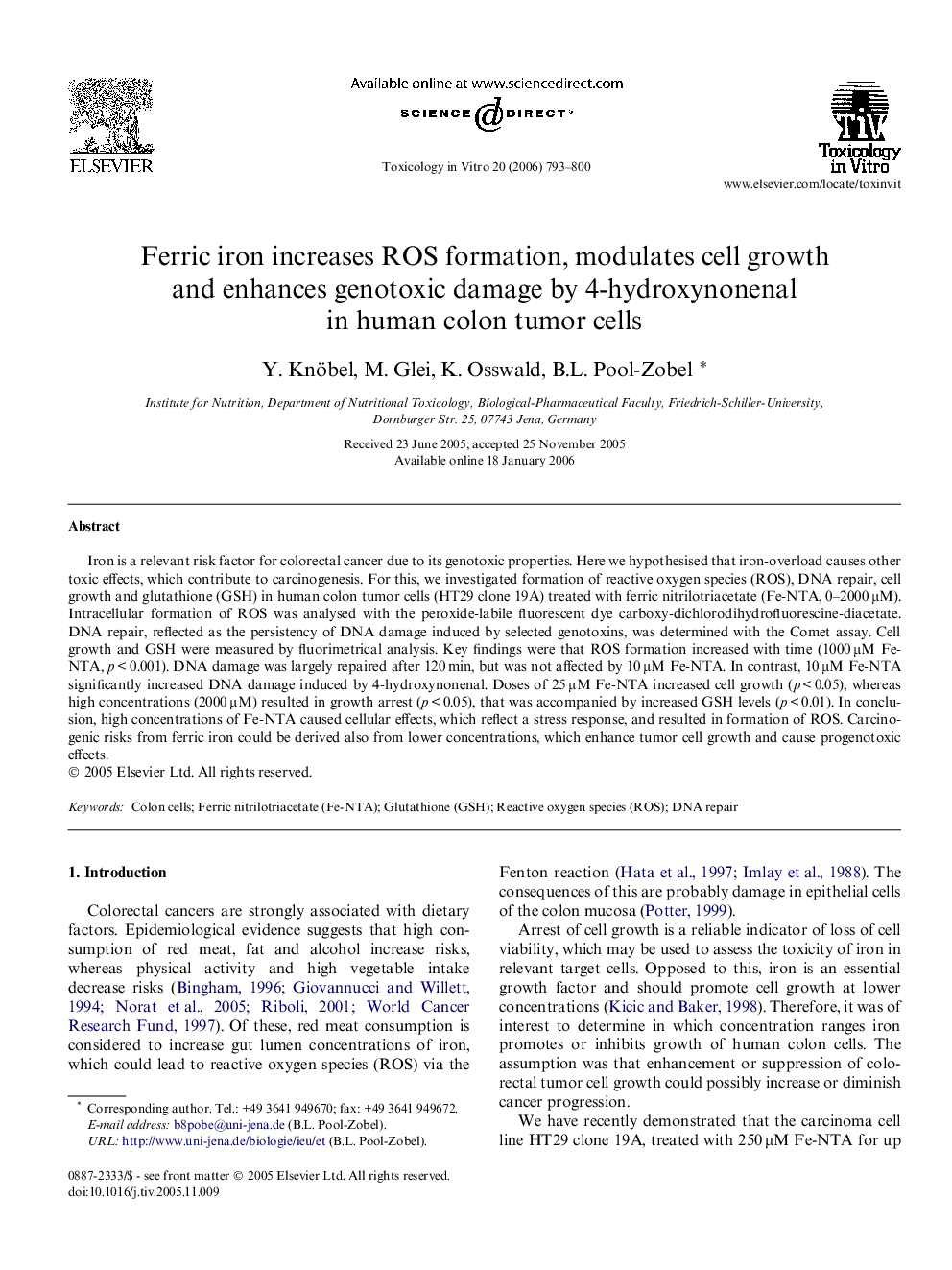| کد مقاله | کد نشریه | سال انتشار | مقاله انگلیسی | نسخه تمام متن |
|---|---|---|---|---|
| 2603448 | 1133821 | 2006 | 8 صفحه PDF | دانلود رایگان |

Iron is a relevant risk factor for colorectal cancer due to its genotoxic properties. Here we hypothesised that iron-overload causes other toxic effects, which contribute to carcinogenesis. For this, we investigated formation of reactive oxygen species (ROS), DNA repair, cell growth and glutathione (GSH) in human colon tumor cells (HT29 clone 19A) treated with ferric nitrilotriacetate (Fe-NTA, 0–2000 μM). Intracellular formation of ROS was analysed with the peroxide-labile fluorescent dye carboxy-dichlorodihydrofluorescine-diacetate. DNA repair, reflected as the persistency of DNA damage induced by selected genotoxins, was determined with the Comet assay. Cell growth and GSH were measured by fluorimetrical analysis. Key findings were that ROS formation increased with time (1000 μM Fe-NTA, p < 0.001). DNA damage was largely repaired after 120 min, but was not affected by 10 μM Fe-NTA. In contrast, 10 μM Fe-NTA significantly increased DNA damage induced by 4-hydroxynonenal. Doses of 25 μM Fe-NTA increased cell growth (p < 0.05), whereas high concentrations (2000 μM) resulted in growth arrest (p < 0.05), that was accompanied by increased GSH levels (p < 0.01). In conclusion, high concentrations of Fe-NTA caused cellular effects, which reflect a stress response, and resulted in formation of ROS. Carcinogenic risks from ferric iron could be derived also from lower concentrations, which enhance tumor cell growth and cause progenotoxic effects.
Journal: Toxicology in Vitro - Volume 20, Issue 6, September 2006, Pages 793–800